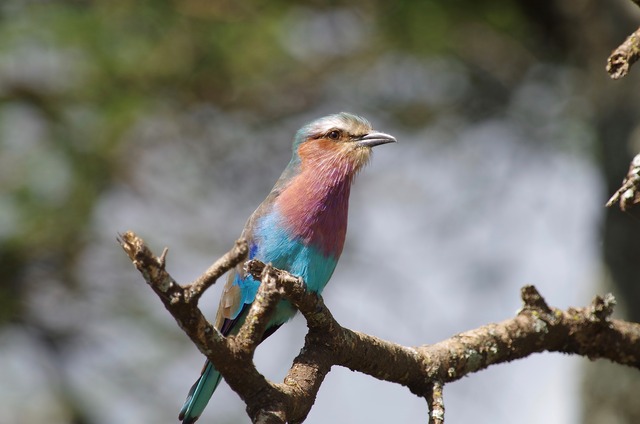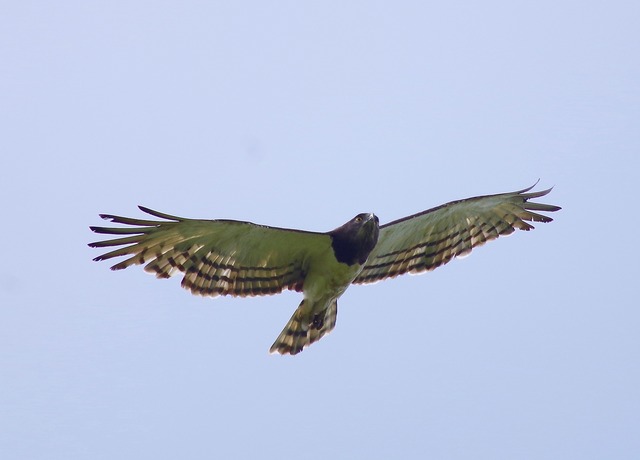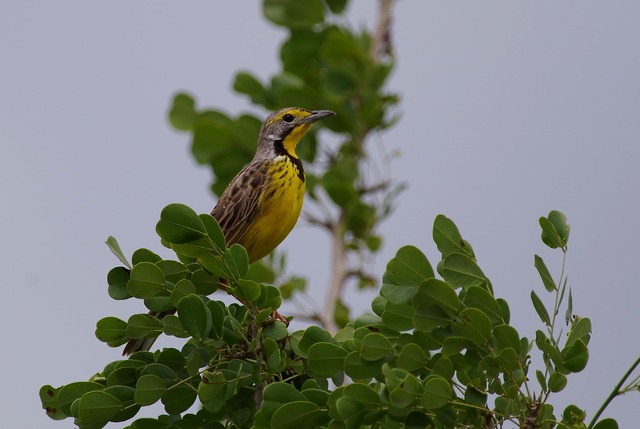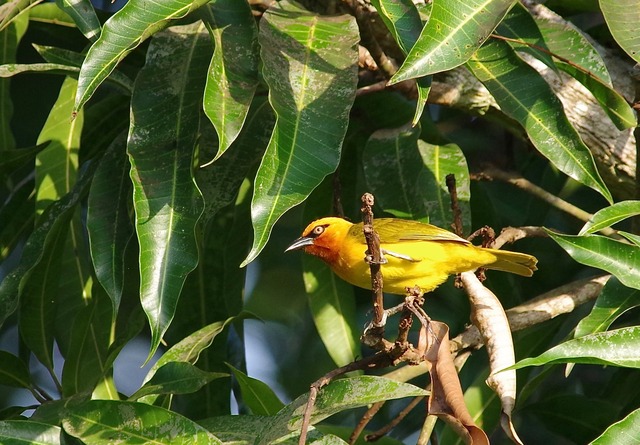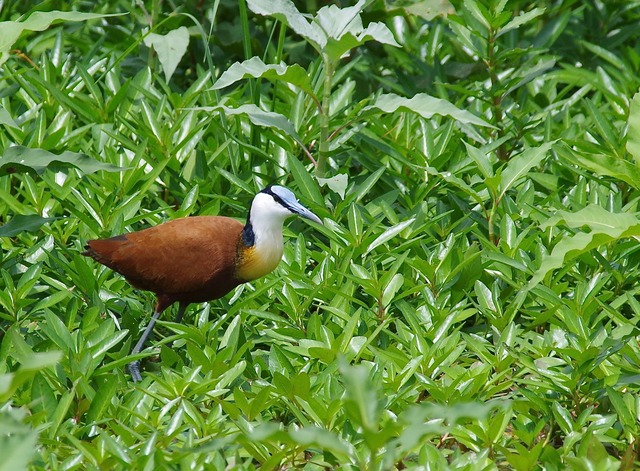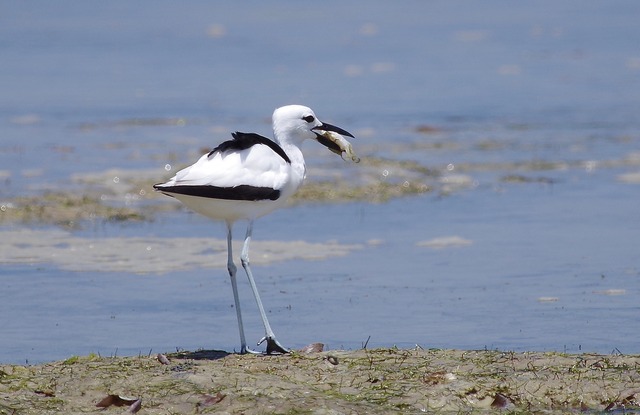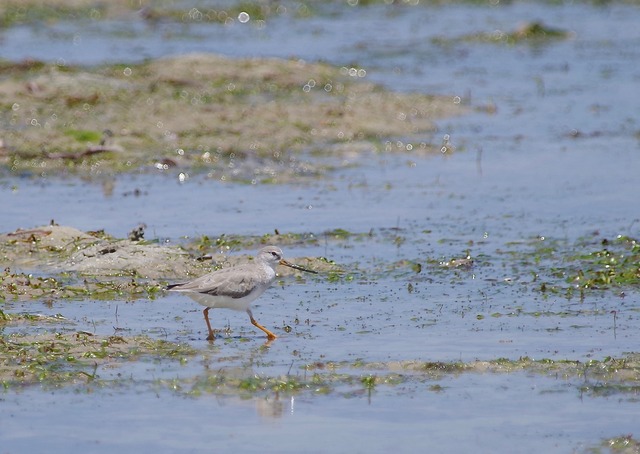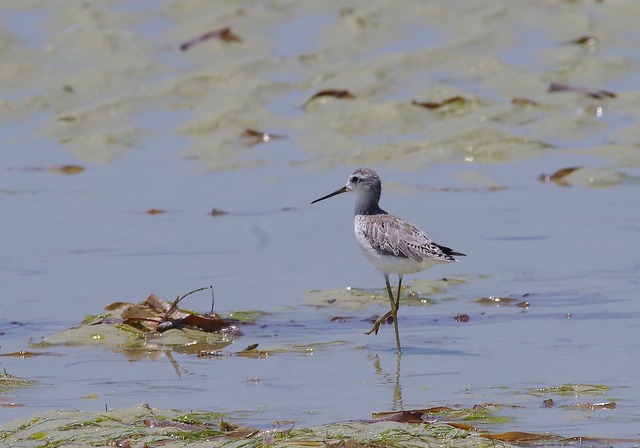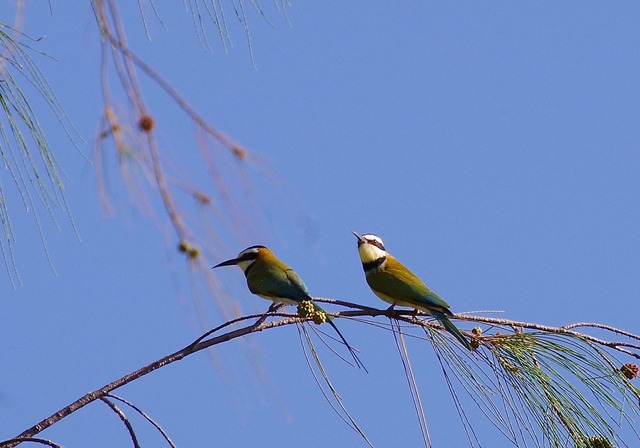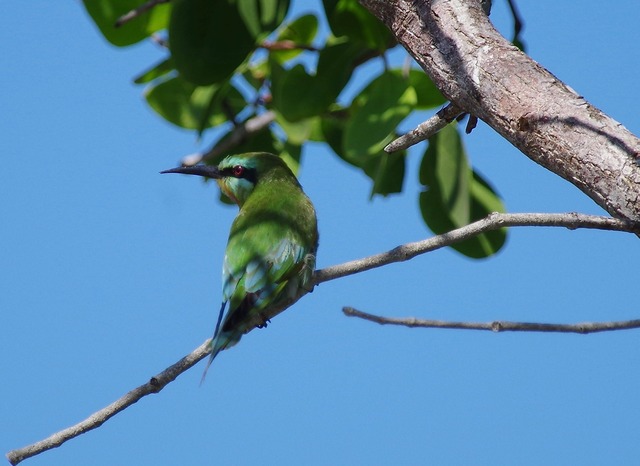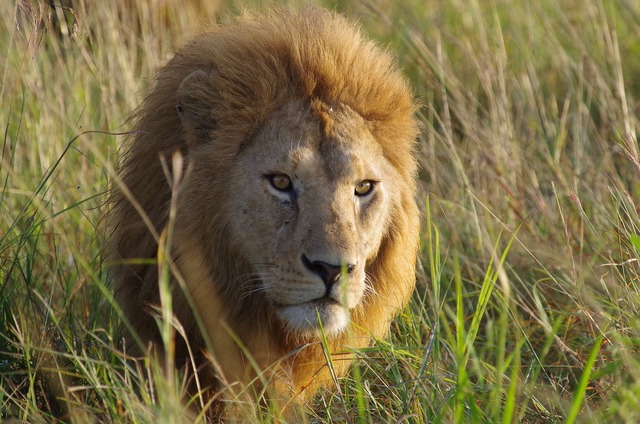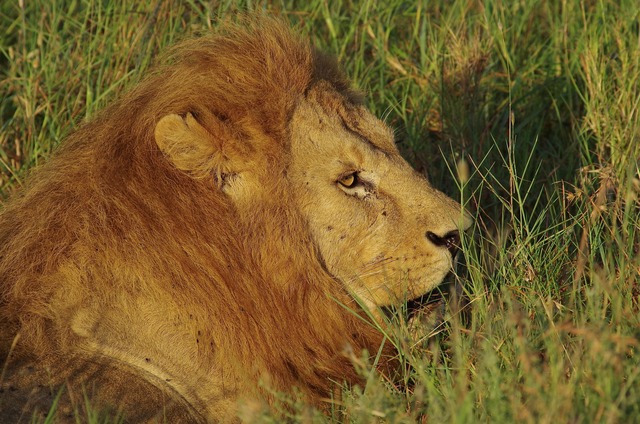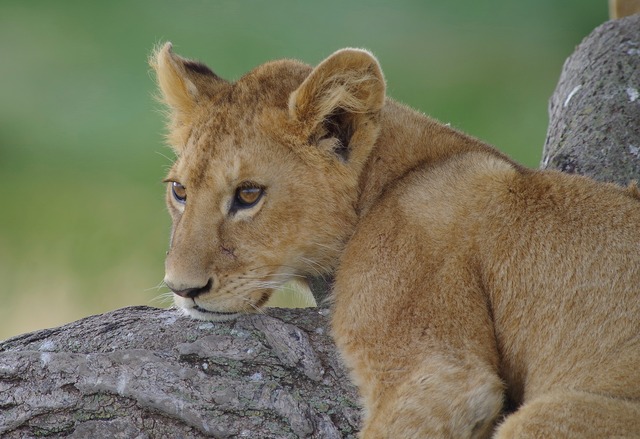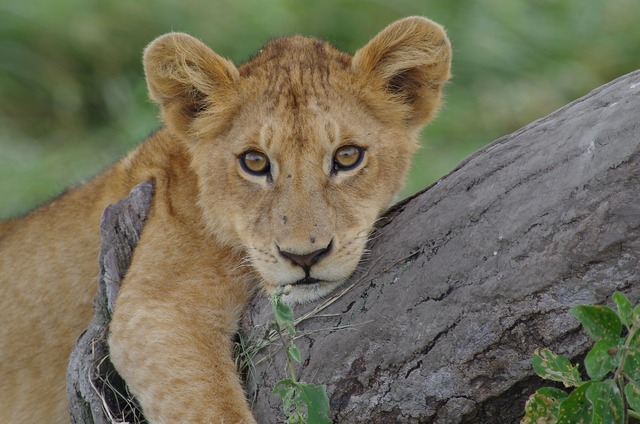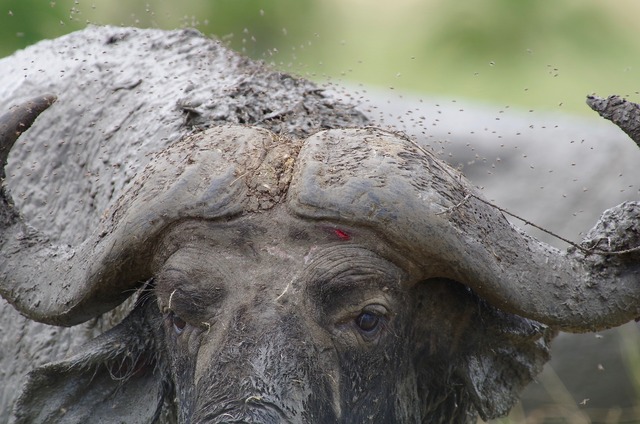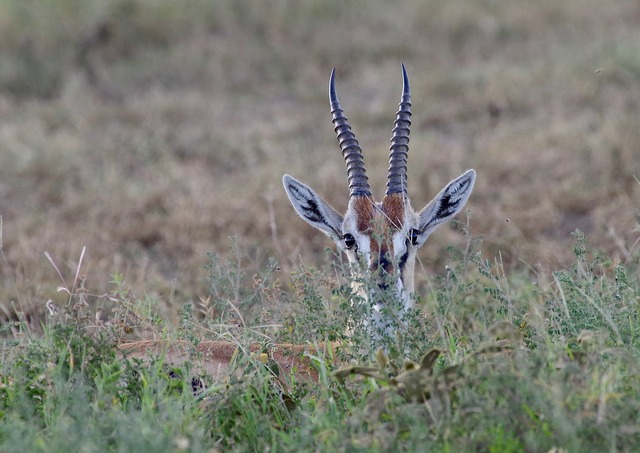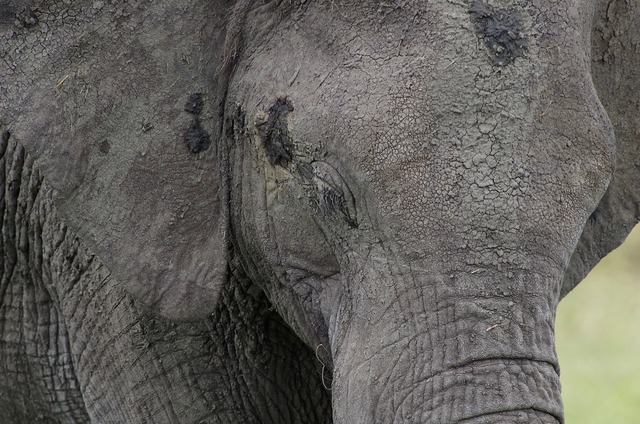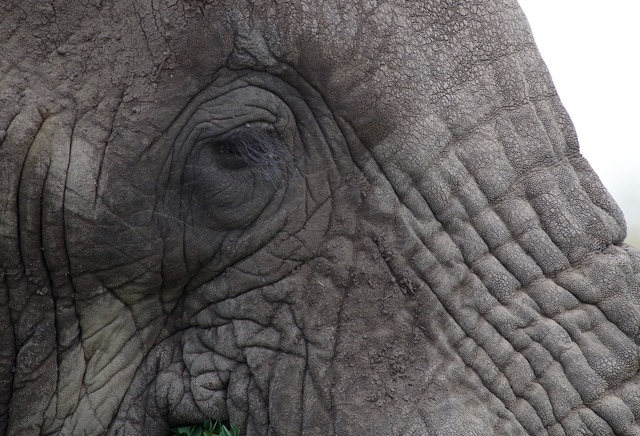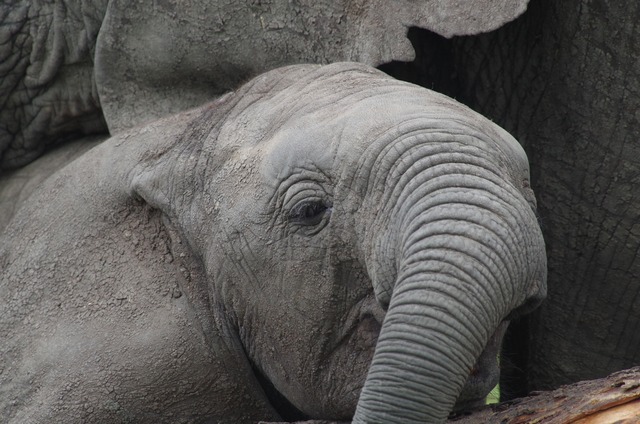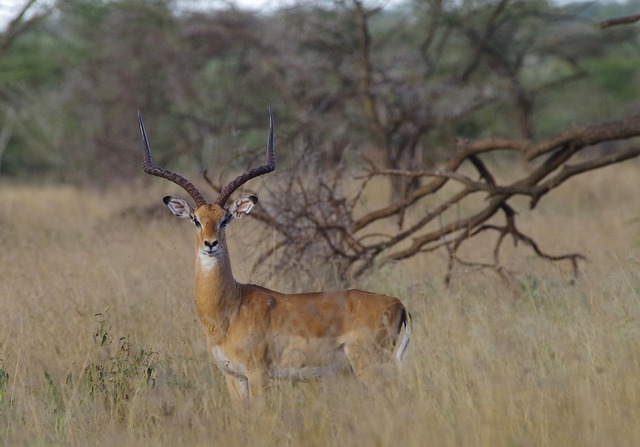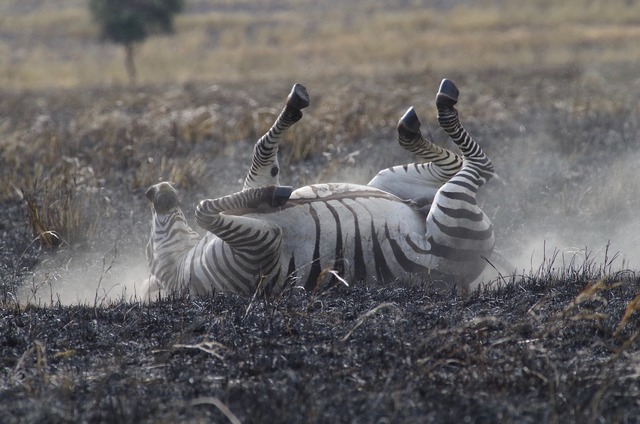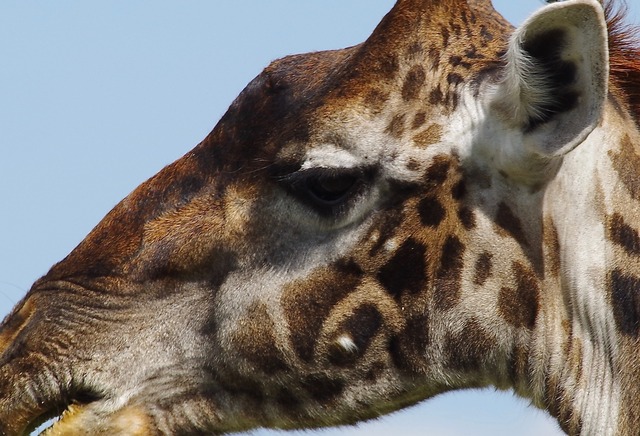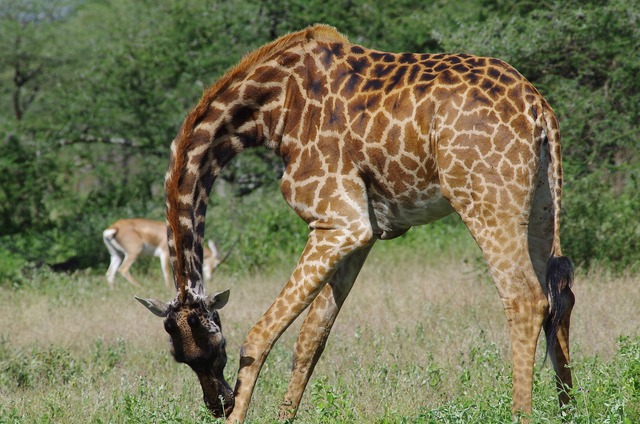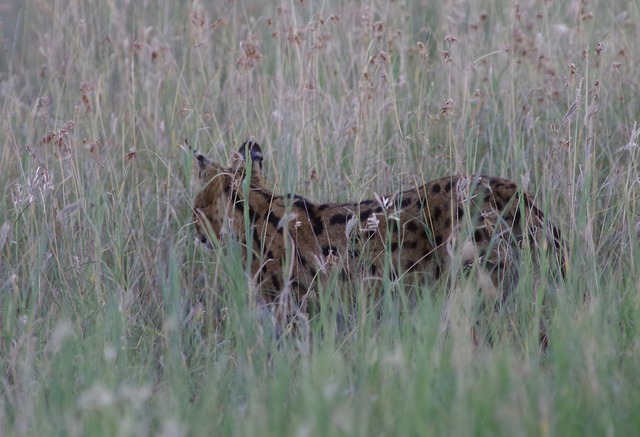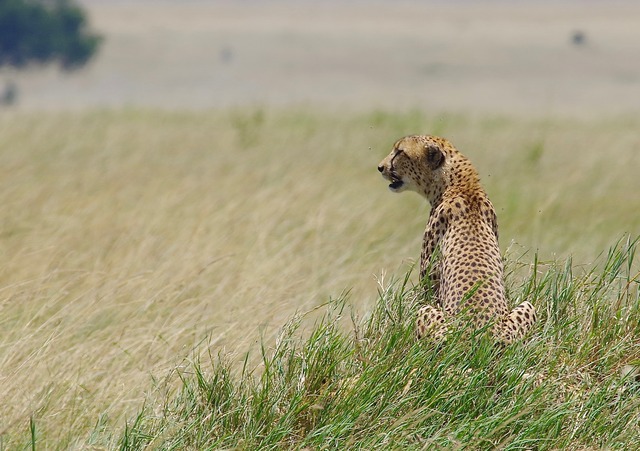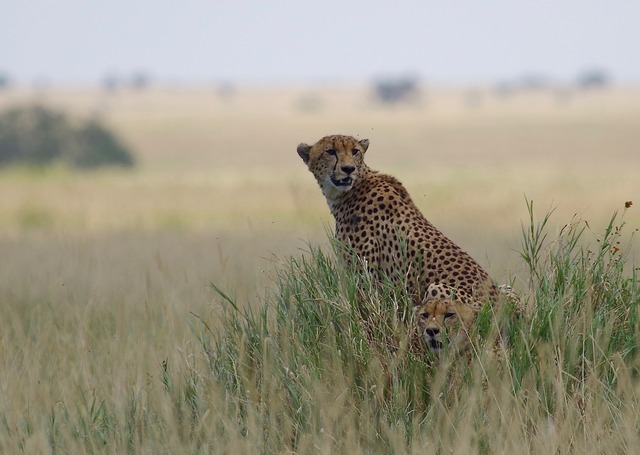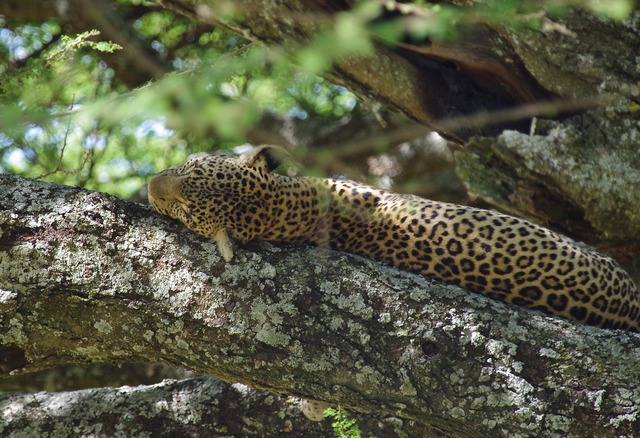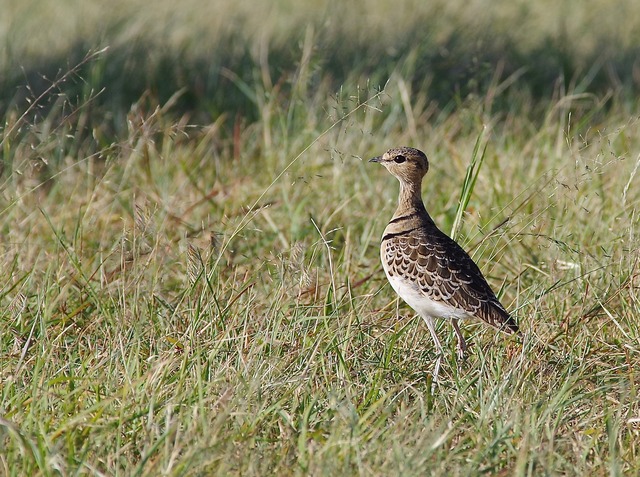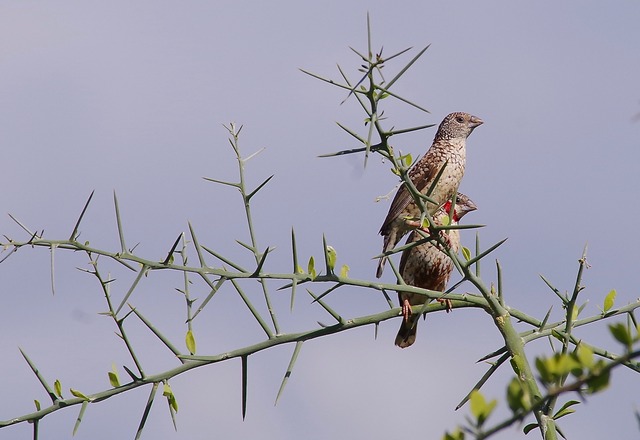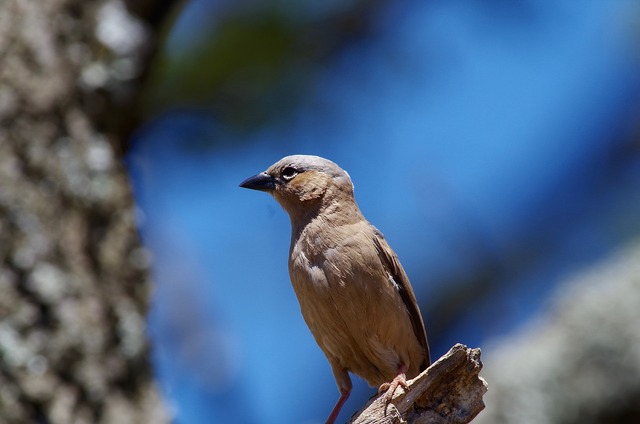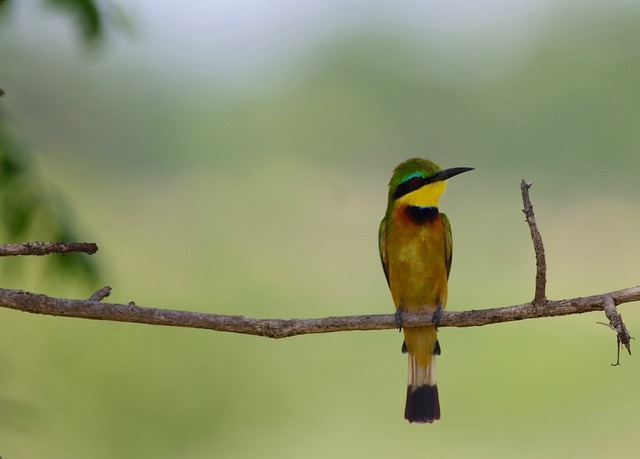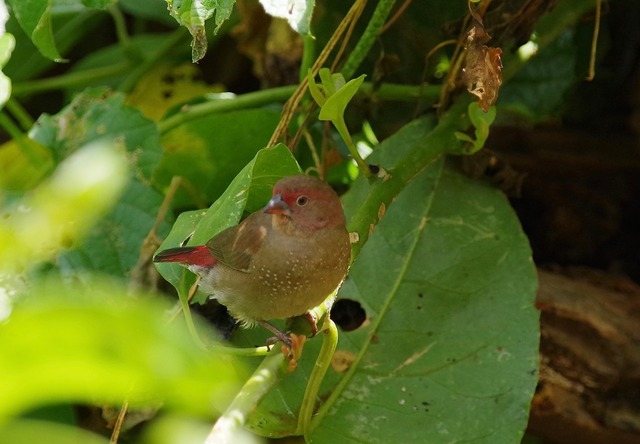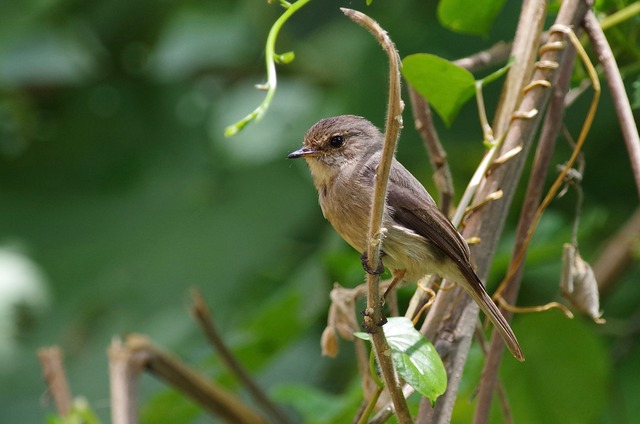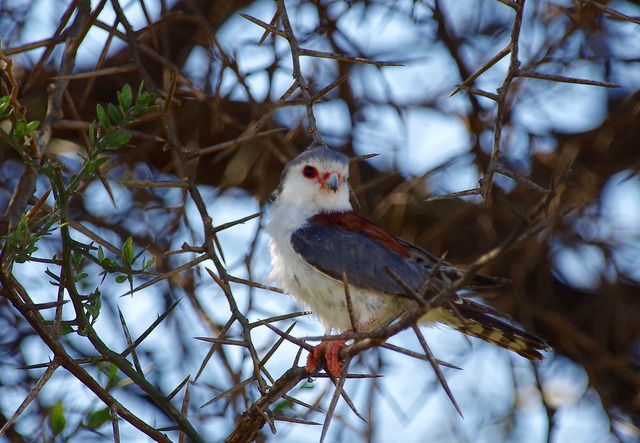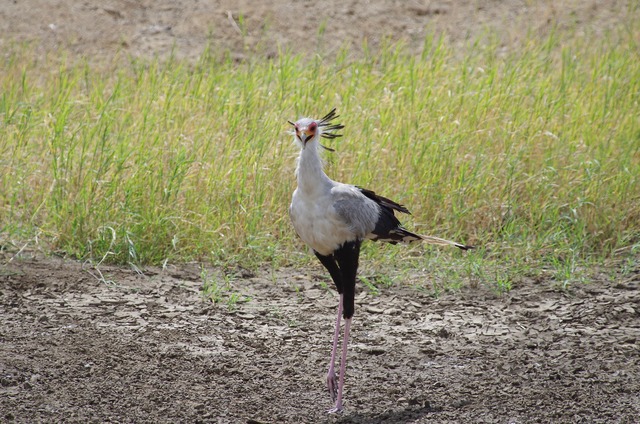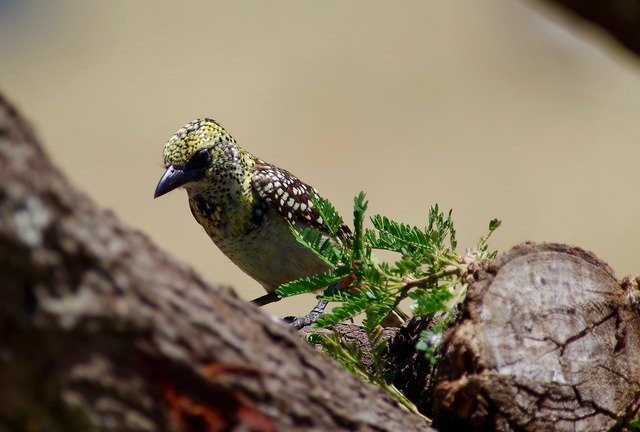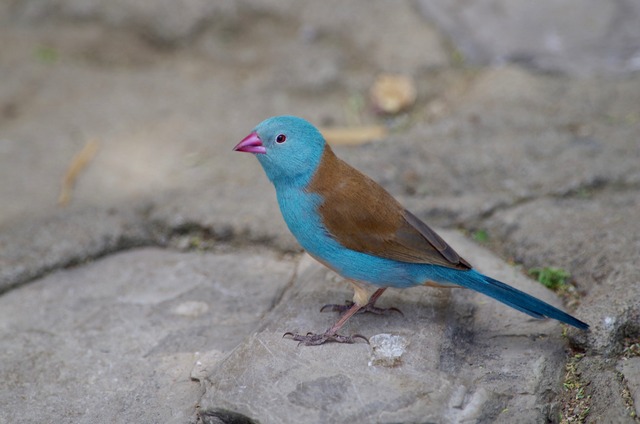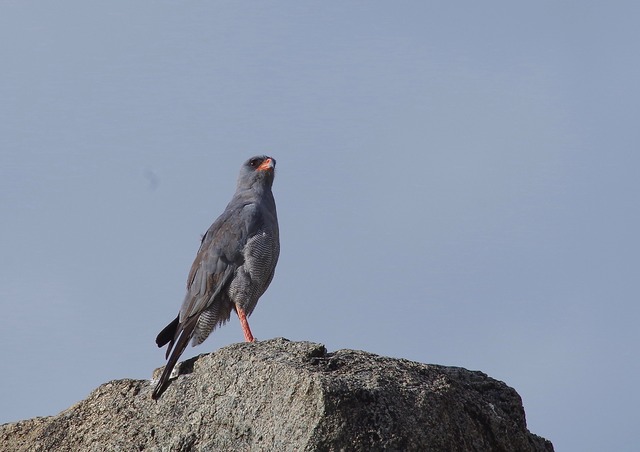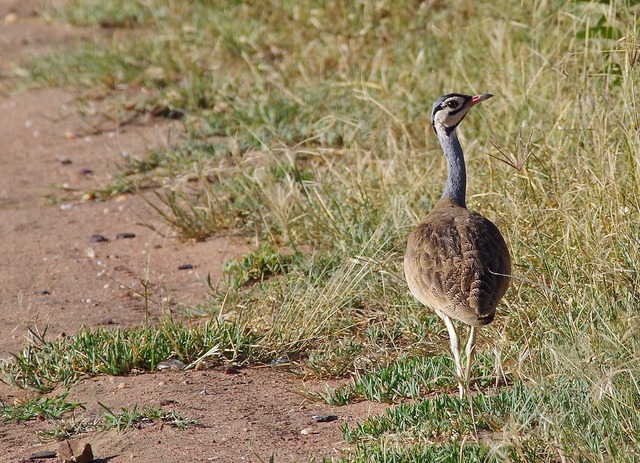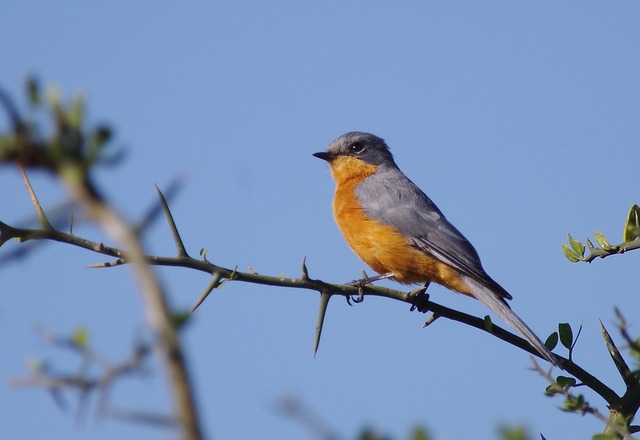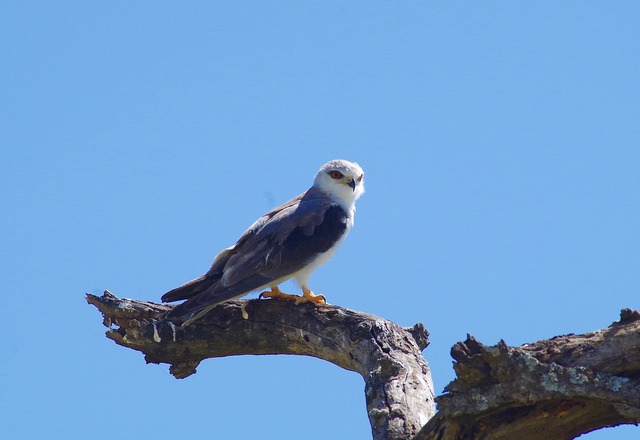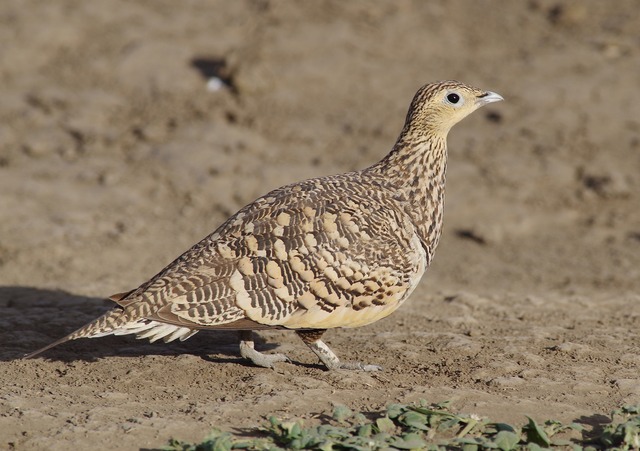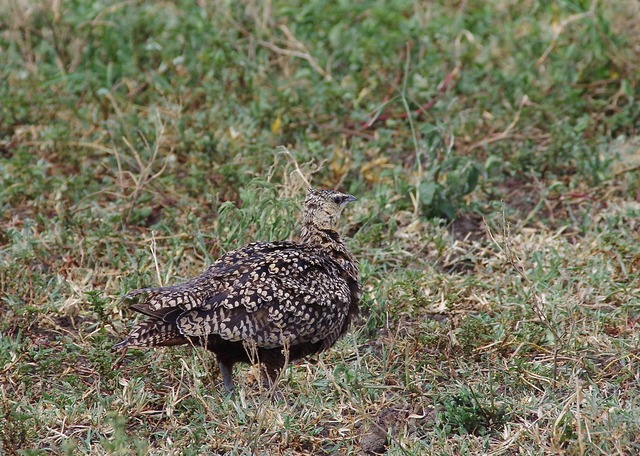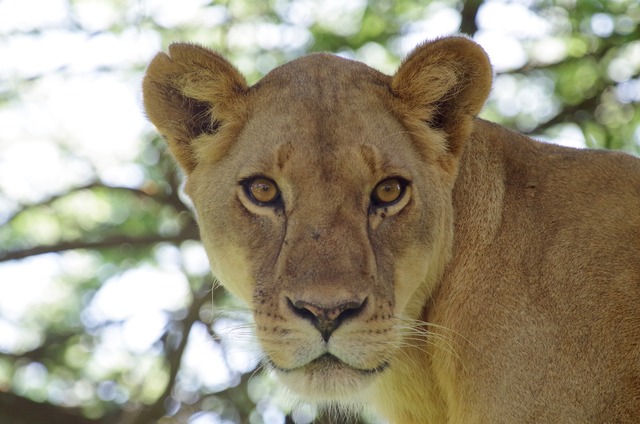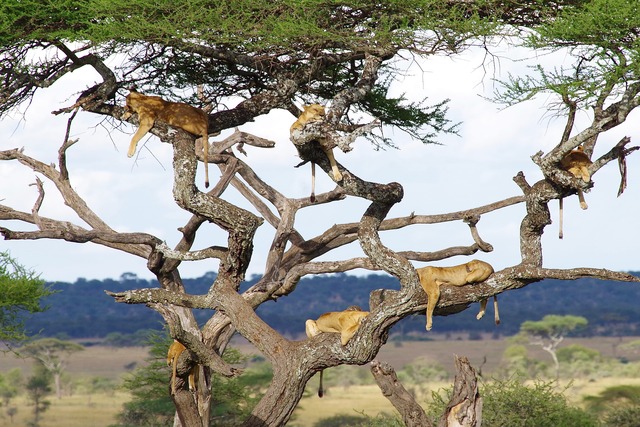Leif Rydell
Tanzania March 2016
Tanzania 2016 (Kibaha school, Coast near Bagamoyo and also Serengeti).
From late February to the middle of March 2016 I had the privilege to spend some time in Tanzania with my Swedish students in an exchange program. We were staying at Kibaha secondary school 40 km west of Dar es Salaam.This area is not savanna but more of combination of agricultural land and some open bush country, making wildlife including birdlife less frequent both in abundance as in number of species. For 3 weeks we participated in different activities close to the school or as day trips further away. We also made a 4 day trip up north. Working as a teacher I still birded as much as possible and also took photos when possible. In 2014 I made the same trip but at this time later in the season from late March to the middle of April. (See that blog). Below you can see some of the birds and mammals I saw. At "trip reports" you can also find my list of birds/ mammal seen if you are interested as well as all my other trips.
The Lilac-breasted Roller was quite common around Kibaha school and seen most days, preferring open areas. Also common up north. Spending time around Kibaha does not give you the same amount of species as further north but you still get a good chance spot some nice species like this Black-chested Snake-Eagle, Yellow-throated Longclaw and Spectacled Weaver.
At the Kibaha girls school I had excellent views of a family of African Jacanas as well as European Bee-eaters, Palm-nut Vultures and quite surprising a pair of Senegal Lapwings. Here I also saw Eurasian Golden Oriole, Af. Hoopoe, Spotted Flycatcher and several Flappet Larks displaying (remarkable sound). It´s fun to see "swedish" birds when you are in Tanzania.
At two occasions we made study visits near the coast which gave me a few hours for birding. At both times I was lucky to be there while it was low tide. Shorebirds are a very nice group with the combo of classic beauty and challenges to decide species when not in breeding plumages. A favorite of which I saw around 100 was the Crab Plover. However, seeing birds as Terek Sandpiper and March Sandpiper close up really made these hours memorable.
Inland birds seen at these locations included two stunning bee-eaters, White-throated and Blue-cheeked.
During our last 4 days we took the long trip up to the north for Arusha and Serengeti. In Arusha we visited a coffee plantation which was interesting and also a Masaii village on the way towards Serengeti, Serengeti is a magic place and the 1,5 days we spent here is of course not enough if you want to see more than I did. Still a saw many birds and lots of good mammals. On the plains near Lake Manyara there were huge flocks of birds, which of some, I could´t see well enough to tell what species they were. However, spending 1,5 days in Serengeti still gives all your senses so many fantastic memories that it´s hard to pick what you want to describe. We saw many lions, more than 50 and it was interesting to see so many up in the trees. According to our guide it was most likely because of the high presence of Tsetse-flies which are quite unpleasant. These pictures are from two families not far from each other.
Other individuals trying to escape the flies were the Af. Buffaloes and the common Thomson´s Gazelles.
Elephants are so amazing animals. It´s so obvious that they are a family who live together and take care of each other. The small youngsters are always kept in the centre of the group and a few of the bigger individuals feed at a little bit away from the main family group.
The abundance of wildlife is so great and you never need to go far before you reach new unforgettable views, like these: Dik-Dik, Impala, Common Zebra and Masai Giraffe.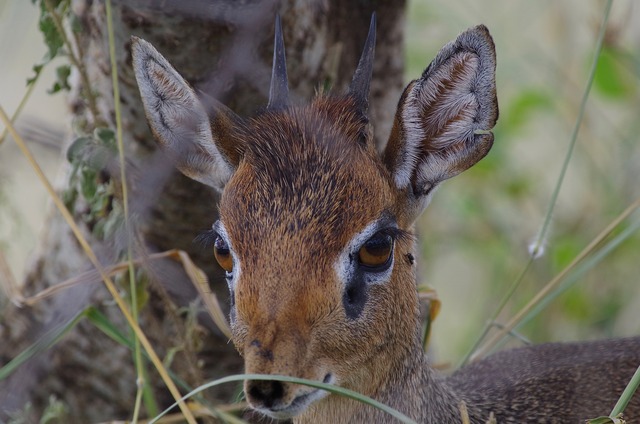
I was lucky to see "all" cats you wish to see. The Serval is quite common but not easy to see. This individual just crossed our track as we passed by and quite quickly disappeared in the high grass. We saw Cheetah at 2 different occasions having the "classic" pose watching the near surroundings. The only Leopard we saw was this lazy one which showed little interested in showing well for good pictures.
Visiting the african savanna means you obviously pay a lot of attention to all the mammals. However, birdlife is plentiful and you will most certainly see birds all the time while slowly driving through. A week just concentrating for birds might give you the chance to really look at all the birds. The following birds are just a few of the fantastic birdlife seen up north. The first 3, Double-banded Courser, Cut-throat Finch and Grey-capped Social Weaver were seen next to the Masai Village we visited.
While waiting for the permit to enter Ngorongoro conservation area (it takes some time to go through the permits) I birded just around the entrance and saw a high amount of species including these: Cinnamon-chested Bee-eater, Red-billed Firefinch and Af. Dusky Flycatcher.
As said before, the savanna is just filled with birds and it´s not easy to chose what to show. A mix of savanna birds are: Pygmy Falcon, Secretary Bird, Usambiro Barbet, Blue-capped Cordon Bleu, Dark Chanting Goshawk, White-bellied Bustard, Silverbird, Black-shouldered Kite and these two females of Chestnut-bellied and Yellow-throated Sandgrouse.
A lioness in Serengeti observing us with great caution and a group escaping the flies.
Compared to the trip I made in 2014 this trip gave more species, maybe because of the weather and time of the year but also as I knew more of what to expect and also visiting some better locations. Below you can see full list of birds/ mammals seen. (N) means northern Tanzania.
First Tanzania 2014 (late March-April)
Birds.
- Common Ostrich. +30 (N).
- Helmeted Guineafowl. +20 (N).
- Crested Guineafowl. 15 in a Flock at Gibb´s Farm.
- White-faced Whistling Duck. 1 single bird Ngorongoro.
- Cape Teal. +10 (N)
- Lesser Flamingo. Aprox. 200 close enough for identification in Ngorongoro. Many thousands further away.
- Yellow-billed Stork. 1 bird (N)
- African Openbill. +50 widespread.
- White Stork. 1 bird (N).
10. Marabou Stork. 1 bird seen flying (N).
11. African sacred Ibis. +20 spread out.
12. Hadada Ibis. 2 birds (N).
13. African Spoonbill. 2 birds (N).
14. Western Cattle Egret. Common in suitable habitat.
15. Black-headed Heron. 1 bird at the coast and 10 birds (N).
16. Purple Heron. One bird in Ngorongoro
17. Great Egret. 2 birds (overlooked).
18. Dimorphic Egret. 2 birds Bagamoyo.
19. Hammerkop. 1 bird Kibaha.
20. Great White pelican. 2 birds at the coast.
21. Secretarybird. 2 birds at nesting tree, Ngorongoro.
22. Black-winged Kite. 3 birds spread out.
23. European Honey Buzzard. 1 bird at Kibaha.
24. White-backed Vulture. +10 Ngorongoro.
25. Black-chested Snake Eagle. 2 single birds in Ngorongoro.
26. Bateleur. 1 single bird Arusha.
27. Booted Eagle. 1 bird outside Arusha.
28. Lizzard Buzzard. 1 bird Bagamoyo.
29. Black Kite. 6 birds Hippo-pool Ngorongoro.
30. Augur Buzzard. 1 single bird in a tree when leaving Ngorongoro.
31. Amur Falcon. More than 50 birds flew over our hostel in Kibaha one evening just before dark.
32. European Hobby. 2 birds Ngorongoro.
33. Lanner Falcon. One bird perched in a tree, Ngorongoro.
34. Kori Bustard. +10 in Ngorongoro.
35. Allen´s Gallinue. I saw one bird at Kibaha far out in a marshy lake. Managed to digiscope it.
36. Pied Avocet. 3 birds (N).
37. Blacksmith Lapwing. + 100 (N).
38. Crowned Lapwing. 3 birds Ngorongoro.
39. Grey Plover. 3 birds Bagamoyo.
40. Common Ringed Plover. 5 at Bagamoyo.
41. White-fronted Plover. 2 at Bagamoyo.
42. Lesser sand Plover. +5 at Bagamoyo.
43. Greater sand Plover. 1 bird at Bagamoyo.
44. Whimbrel. 2 birds at bagamoyo.
45. Common Greeshank. 5 birds at Bagamoyo.
46. Green Sandpiper. 1 bird at Kibaha.
47. Terek Sandpiper. 2 birds at Bagamoyo.
48. Common Sandpiper. 3 at Bagamoyo and 1 Kibaha.
49. Curlew Sandpiper. 3 at Bagamoyo.
50. Grey-headed Gull. + 10 Bagamoyo.
51. Lesser Black-backed Gull. +5 birds Bagamoyo.
52. Caspian Tern. 1 bird Bagamoyo.
53. Greater Crested Tern. +10 Bagamoyo.
54. Saunder´s Tern. +10 Bagamoyo.
55. Common Tern. +20 Bagamoyo.
56. White-winged Tern. 2 at Bagamoyo.
57. Rock Dove. Yes.
58. Mourning Collared Dove. Yes
59. Ring-necked Dove. Yes.
60. Emerald Spotted Wood- Dove. 3 separate birds around Kibaha.
61. Tambourine Dove. 2 birds at Gibb´s Farm.
62. Fisher´s Lovebird. +10 (N).
63. Yellow-collared Lovebird. 3 birds on a roof at “snake farm” (N).
64. Yellow-collared Love Bird. One single bird (N).
65. Brown-headed Parrot. 3 birds at KIbaha.
66. White-bellied Go-away-bird. 1 bird at Kibaha.
67. White-browed Coucal. 2 birds at separated locations.
68. Burchell´s Coucal. Surprisingly I found a pair outside Kibaha.
69. African Palm Swift. Common at a few locations.
70. Little Swift. Common in Morogoro and Arusha.
71. Speckled Mousebird. 1 bird at Kibaha and +10 (N).
72. Lilac-breasted Roller. Quite common and widespread.
73. European Roller. +10 birds around Bagamoyo.
74. Broad-billed Roller. 1 bird outside Kibaha.
75. Grey-headed Kingfisher. 2 birds around Kibaha.
76. Brown-hooded Kingfisher. 2 separated birds outside Kibaha.
77. Striped Kingfisher. 8 different birds spread out.
78. Pied Kingfisher. 1 Kibaha and 2 Bagamoyo.
79. Little Bee-eater. 1 Morogoro and 5 (N).
80. Cinnamon-chested Bee-eater. 8 birds at Gibb´s Farm.
81. White-fronted Bee-eater. 2 single birds outside Arusha.
82. Blue-cheeked Bee-eater. 1 bird Bagamoyo.
83. European Bee-eater. 2 Kibaha and 5 (N).
84. Northern Carmine Bee-eater. 4 beautiful birds outside Bagamoyo.
85. African Hoopoe. 1 bird Ngorongoro.
86. Green Wood Hoopoe. 5 birds Kibaha and 3 (N).
87. Common Scimitarbill. 1 single bird Kibaha.
88. African Grey Hornbill. A family of 4 birds were waking us up every morning, Kibaha.
89. Brown-breasted Barbet. Widespread with a few birds, totally 20 birds.
90. Red-and yellow Barbet. One bird seen from the bus on a termite-mound between Ngorongoro and Arusha.
91. Cardinal Woodpecker. 2 birds Kibaha.
92. African Grey Woodpecker. 2 birds Ngorongoro.
93. Black-crowned Tchagra. One bird Bagamoyo and one bird outside Arusha.
94. Black-backed Puffback. One bird at Flamingo Lodge.
95. Tropical Boubou. Aprox. 10 birds spread out Kibaha and north.
96. Red-backed Shrike. Quite common both around Kibaha and up north.
97. Lesser Grey Shrike. 1 single bird outside Kibaha.
98. Isabelline Shrike. One bird at Ngorongoro.
99. Common Fiscal. +10 birds spread out up north.
- African Golden Oriole. 8-10 birds around Kibaha the first week, them they seemed to disappear as I saw none the second week.
- Fork-tailed Drongo. A pair outside our hostal, Kibaha and quite conspicuous elsewhere.
- African Paradise Flycatcher. 2 beautiful males at our lodge in Karatu.
- White-tailed Blue Flycatcher. 2 nice birds at Gibb´s Farm.
- House Crow. Common, especially around Kibaha and the coast.
- Pied Crow. The opposite of its relative. More common in the north.
- Red-capped Lark. 10+ up north.
- Fisher´s Sparrow-Lark. 4 just as we came down to the crater.
- Common Bulbul. Yes, common around Kibaha.
- Mountain Greenbul. 3 birds near Gibb´s farm.
- Lowland Tiny Greenbul. 2 birds showed well in a garden-like place just outside Kibaha.
- Black-Saw-wing. Common near Gibb´s Farm.
- Barn Swallow. About 15 birds, mostly north.
- Wire-tailed Swallow. About 10 birds, mostly north.
- Lesser Striped Swallow. Nesting area at Kibaha School and a few more throughout.
- Mosque Swallow. Aprox. 10 birds up north.
- Red-faced Cisticola. A pair showed well at Gibb´s Farm.
- Singing Cisticola. 1single bird Kibaha.
- Tawny-flanked Prinia. 1 bird Kibaha School and 1 up north.
- Grey-capped Warbler. A pair was seen “Elephant Cave”.
- Grey-backed Camaroptera. 1 bird Kibaha and 2 birds up north.
- Mountain White-eye. Totally 3 birds Gibb´s Farm.
- Wattled Starling. 15+ Ngorongoro.
- Black-bellied Starling. One bird at a cow farm, Kibaha.
- Superb Starling. 2 birds Ngorongoro.
- Hildebrandt´s Starling. 20+ Ngorongoro.
- Red-winged Starling. 5 birds in Arusha.
- Red-billed Oxpecker. 3 birds on gazelles, Ngorongoro.
- Spotted Ground Thrush. One bird in the garden at our lodge in Karatu.
- White-starred Robin. We flushed about 8 birds in Ngorongoro and Mt:Meru realizing it is quite common, but never stopped until it disappeared in to the forest.
- Rüppell´s Robin Chat. 1 bird seen well high up and in dense jungle next to Gibb´s Farm.
- White-browed Robin Chat. 2 birds in the garden at Flamingo Lodge, Karatu.
- (African) Stonechat (race axilaris) Common at the slopes of Mt:Meru
- Schalow´s Wheatear. 3 in Ngorongoro.
- Capped Wheatear. 1 bird in Ngorongoro.
- Anteater Chat. A pair just as we had descended the crater.
- White-eyed Slaty Flycatcher. 2-3 birds at the slopes of Gibb´s farm.
- Pale Flycatcher. A few birds seen around Kibaha and villages around.
- African Grey Flycatcher. A pair outside Gibb´s farm.
- Spotted Flycatcher. +10 birds seen throughout.
- Black-throated Wattle-eye. 1 bird outside Bagamoyo.
- Collared Sunbird. Quite common.
- Amethyst Sunbird. 1- 2 birdsin the garden of Flamingo Lodge.
- Eastern- Double-collared Sunbird. 1 bird at Gibb´s farm and 1 at the slopes of Mt:Meru.
- Purple-banded Sunbird. 3-4 birds seen around Kibaha.
- Variable Sunbird. +10 birds seen at different places.
- Rufous-tailed Weaver. 8-10 birds at Hippo pool, Ngorongoro.
- House Sparrow. Yes.
- Northern Grey-headed Sparrow. A pair outside Kibaha.
- White-headed Buffalo-Weaver. 2 single birds up north.
- Eastern Golden Weaver. +20 at a small village outside Kibaha.
- Holub´s Golden Weaver. A pair at “Elephant Cave”.
- Lesser Masked Weaver. Seen at 3 different colonies.
- Viteline Masked Weaver.
- Village Weaver. 50+ at 3 different colonies.
- Red-billed Quelea. 1 bird in breeding plumage outside Ngorongoro. Hundreds of birds in “brown-bird-flocks” which I had not time to concentrate on.
- Yellow-crowned Bishop. 2 birds seen on our way up north.
- Black Bishop. 1 bird close to Flamingo Lodge.
- Zanzibar Bishop. Spread out around Kibaha, totally 9-10 birds.
- Yellow Bishop. 2 separate birdsseen around Kibaha.
- White-winged Widowbird. One bird in the reeds at fishing lake, Morogoro.
- Green-winged Pytilia. One single bird at a garden in a town between Kibaha and Dar es Saalam
- Abyssinian Crimsonwing. Two nice birds at Gibb´s farm.
- Grey-headed Negrofinch. 1 beautiful bird at “Elephant Cave”.
- Southern Cordon-bleu. Quite common around Kibaha.
- Red-cheeked Cordon-bleu. A few birds up north.
- Purple Grenadier. One bird outside Kibaha and one at Gibb´s Farm.
- Yellow-bellied Waxbill. A pair next to Gibb´s Farm.
- Crimson-rumped Waxbill. A pair at Flamingo Lodge.
- Common Waxbill. A pair at Kibaha School.
- Village Indigobird. 2 separate birds outside Kibaha.
- Pin-tailed Whydah. Totally 6 birds at different locations outside Kibaha.
- Straw-tailed Whydah. 1 single bird just outside Flamingo Lodge.
- Long-tailed Paradise Whydah. One stunning bird at the cow farm outside Kibaha.
- Mountain Wagtail. One bird at “Elephant cage”.
- African Pied Wagtail. A few birds throughout.
- Yellow-throated Longclaw. One bird Kibaha and one at Ngorongoro.
- African Pipit. 3 birds at Kibaha School.
- Western Citril. 1 single bird high up om Mt:Meru.
- Yellow-fronted canary. 2 birds outside Bagamoyo.
- Thick-billed Seedeater. Quite common at Gibb´s Farm and Mt:Meru.
Mammals at Ngorongoro. (All mammals except Vervet monkey was seen Ngorongoro Conservation Area.
- Olive Baboon. Common.
- Vervet Monkey. A family around Kibaha.
- Black-backed Jackal. +10
- Spotted Hyena. A family of 8.
- Lion. 3 males and 1 female.
- Af Elephant. Common.
- Common Zebra. Common.
- Black Rhinoceros. 2 quite close.
- Hippopotamus. Large family at hippo pool.
10. Common Warthog. Common.
11. Giraffe. 3 seen on the fields outside Lake Manyara N.P.
12. Af. Buffalo. Common.
13. Eland. A few.
14. Thomson´s Gazelle. Quite common.
15. Grant´s Gazelle. Quite common.
16. Hartebeest. Just a few seen.
17. Blue Wildebeest. Common.
Tanzania 2016. (Feb-March)
2 years later I did the same trip for three weeks, though with some different aspects of the itinerary. This time we went to the Serengeti and did a open camp experience at Seonera. Serengeti is a huge place and quite different to Ngorongoro. In Ngorongoro you have animals around you all the time but in Serengeti you can drive for quite some time before coming up to the animals. We drove into the Southern Corridor, as the big herds of Wildebeests should be here at this time. Surprisingly we did not see that many so they must have moved on somewhere else. This time we also visited the coast twice, Bagamoyo (1km south of “Stone town/ oid fort) and just north of Dar es Salaam at White-sands hotel (in the bird list I will refer to B and WS concerning the birds seen next to the sea). We did not go to Morogoro. Around Kibaha the birds were not exactly the same as previous trip, probably because of a month and a half earlier this time. Up in the north the abundance of birds were incredible. If I haven´t been travelling with my students I had stop so many times that the trip to Serengeti would have been the time doubled. The species highlight were the close encounter of the amazing Crab Plover both seen at Bagamoyo and south of Dar es Salaam.
- Common Ostrich. Quite common
- Helmeted Guineafowl. +100
- Coqui Francolin. About 8 birds in 2 families.
- Crested Francolin. A family of 4.
- Yellow-necked Spurfowl. A family of 4-5.
- Harlequin Quail. One male flushed and gave good enough views.
- White-faced Whistling Duck. 2 birds in a small pond close to camp.
- Egyptian Goose. 20+
- Cape Teal. 4 in a lake.
- Yellow-billed Stork. 3 birds in total.
- Abdim´s Stork. Widespread, more than 1000 seen.
- Wolly-necked Stork. 2 birds got my attention from the “usual stork jizz” for this trip.
- White Stork. Huge flocks seen, a guess would be +2000.
- Marabou Stork. +50.
- African sacred Ibis. Just a few.
- African Spoonbill. Just one bird.
- Striated Heron. One bird at Bagamoyo.
- Western Cattle Egret. Common in suitable habitat.
- Grey Heron. A few seen through out.
- Purple Heron. One bird in Ngorongoro
- Great Egret. A few (overlooked).
- Little Egret. A total of 5 birds.
- Hammerkop. 8 birds at a few spots.
- Long-tailed Cormorant. 5 birds at the coast.
- Secretarybird. 2 birds in Serengeti.
- Black-winged Kite. A few.
- Palm-nut Vulture. A pair at nest Kibaha.
- European Honey Buzzard. More common around Kibaha this year, +10 seen.
- White-backed Vulture. 4 for sure, many vultures not counted.
- Lapped-faced Vulture. 2 beautiful birds close in a tree and 4 more soaring.
- Black-chested Snake Eagle. Excellent views of one bird at Kibaha.
- Bateleur. 1 single bird.
- Tawny Eagle. At least 5 birds in Serengeti.
- (Lizzard Buzzard. 1 captured bird in a cage at a farm outside Kibaha)
- Gabar Goshawk. 1 single bird Serengeti.
- Dark-chanting Goshawk. 2 birds perched on a cliff in Serengeti.
- Montague´s Harrier. Surprisingly common in Serengeti. More than 30 birds seen.
- Black Kite. Not uncommon.
- Af. Fish Eagle. One single bird at a top of a tree in Serengeti.
- Augur Buzzard. 1 single bird on the roadside towards the parks.
- Common Kestrel. Common.
- Greater Kestrel. One bird seen well in Serengeti. First on the ground and then flying.
- Kori Bustard. About 8 in Serengeti.
- White-bellied Bustard. 3 in a family seen well close to the car, Serengeti.
- Black Crake. Seen with single birds at three different stops.
- Spotted Thick-knee. 4 birds in Serengeti.
- Eurasian Oystercatcher. 10 birds at WS.
- Crab Plover. 80 at B and 8 more at WS. Just Great, what a bird.
- Black-winged Stilt. Not uncommon.
- Blacksmith Lapwing. + 20, Serengeti.
- Spur-winged Plover. 4 near our camp.
- Senegal Lapwing. To my surprise I saw a pair at Kibaha Girl school.
- Crowned Lapwing. Common Serengeti.
- Grey Plover. +20 B, +40 WS.
- Common Ringed Plover. Common at B and WS.
- Three-banded Plover. 3 single birds in Serengeti.
- White-fronted Plover. 3 at B.
- Lesser sand Plover. 3 identified at B and10 more at WS.
- Greater sand Plover. 30 at B and 10 at WS. Aprox. +200 unidentified sand plovers were also seen at these locations.
- Af. Jacana. 3 nice birds at a small dam, Kibaha Girls School.
- Bar-tailed Godwit. 2 birds at Bagamoyo
- Whimbrel.. 3 at B and 4 at WS.
- Marsh Sandpiper. At least 2 birds identified at B.
- Common Greenshank. About 20 at B and a few at WS.
- Green Sandpiper. 1 bird at Kibaha.
- Terek Sandpiper. 4 birds at B and 10 at WS..
- Common Sandpiper. 1 at B and 5 at WS.
- Red Knot. 2 at B.
- Curlew Sandpiper. 5 at B.
- Ruff. +10 at B.
- Double-banded Courser. A true trip highlight. About 10 birds at 3 different spots Serengeti and also just outside Mto wa Mbu.
- Black-headed Gull. 2 at WS.
- Sooty Gull. 2 at fishmarket in Dar es Salaam and 20 birds at WS.
- Lesser Black-backed Gull. 4 birds B.
- Gull-billed Tern. 1 at the fish market.
- Caspian Tern. 4 birds at B.
- Greater Crested Tern. 3 at B
- Lesser Crested Tern +100 at B.
- Saunder´s Tern. 3 at B and 15 at WS.
- Common Tern. 2 at B and 2 more at WS.
- Yellow-throated Sandgrouse. A family of 10 in the south corridor.
- Black-faced Sandgrouse. A family of 4 not far from the others.
- Rock Dove. Yes.
- Speckled Pigeon. 1 single bird at Serengeti.
- Af. Olive Pigeon. A pair at Serengeti.
- Mourning Collared Dove. Yes
- Ring-necked Dove. Yes.
- Laughing Dove. About 5 seen.
- Emerald Spotted Wood- Dove. 3 separate birds around Kibaha.
- Namaqua Dove. About 10 birds at a few locations.
- Fisher´s Lovebird. +10 .
- Brown Parrot. A pair at Serengeti.
- Brown-headed Parrot. 4 birds at Kibaha.
- Grey Go-away-bird. 1 bird in Serengeti.
- White-browed Coucal. 1 bird at Kibaha.
- Diedrik Cuckoo. A pair at Naabi gate.
- Böhm´s Spinetail. 2 single birds at Kibaha.
- African Palm Swift. Quite common at a few locations.
- Common Swift. About 10 in total around Serengeti.
- Little Swift. Only 2 in Arusha.
- Speckled Mousebird. +40 Around Serengeti.
- Lilac-breasted Roller. Quite common and widespread.
- European Roller. 2 birds at Bagamoyo.
- Grey-headed Kingfisher. 2 single birds around Kibaha.
- Striped Kingfisher. About 3 around Kibaha.
- Mangrove Kingfisher. 1 at B.
- Pied Kingfisher. 3 at B and I at WS.
- Little Bee-eater. Seen with a few both Kibaha and Serengeti.
- Cinnamon-chested Bee-eater. 1 at Ngorongoro gate.
- White-throated Bee-eater. 4 near W.S
- Blue-cheeked Bee-eater. 2 at B and 3 more little bit further inland.
- European Bee-eater. About 5 Kibaha and a few more around B.
- Northern Carmine Bee-eater. 25 beautiful birds outside Bagamoyo. Wow, what a sight.
- African Hoopoe. 1 bird Serengeti.
- Green Wood Hoopoe. 2 groups of total 8 birds around Kibaha.
- African Grey Hornbill. A total of 15 birds around Kibaha.
- Von der Decken´s Hornbill. One single bird at hippo-pool in Serengeti.
- Yellow-fronted Tinkerbird. 1 single bird just outside Kibaha.
- White-headed Barbet. 2 from roadside on the way towards the parks.
- Brown-breasted Barbet. Not as common as previous year, just a few seen.
- Usambiro Barbet. A pair had their daily breakfast at our camp.
- Chinspot Batis. A pair at our camp.
- Black-crowned Tchagra. Just one at Kibaha.
- Tropical Boubou. Aprox. 8-10 birds spread out Kibaha and north.
- Brubru. One at Serengeti.
- Long-tailed Fiscal. 3 along the road towards the parks.
- Grey-backed Fiscal. 2 up north.
- Taita Fiscal. A few up north.
- Common Fiscal. Common.
- Eurasian Golden Oriole. 2 birds around Kibaha girls school showed well and gave me the beautiful voice I sometimes hear in Sweden.
- Square-tailed Drongo. Just one seen close to Bagamoyo.
- Fork-tailed Drongo. A pair outside our hostel, Kibaha and quite conspicuous elsewhere.
- House Crow. Common, especially around Kibaha and the coast.
- Pied Crow. The opposite of its relative. More common in the north.
- Cape Rook. 2 seen well in Serengeti.
- White-necked Raven. 3 of them up north.
- Red-throated Tit. A pair showed well at the toilet at Naani Gate.
- Flappet Lark. 3-4 of them at Kibaha Girls school. What amazing sound they perform.
- Red-capped Lark. None, probably overlooked.
- Fisher´s Sparrow-Lark. A few seen.
- Common Bulbul. Yes, common around Kibaha.
- Mountain Greenbul. 2 close to Ngorongoro gate.
- Yellow-bellied Greenbul. One bird at Kibaha.
- Black-Saw-wing. 6 around Ngorongoro gate.
- Barn Swallow. Quite common.
- Angola Swallow. When I saw these 2 birds I felt confused as something in the jizz said they weren´t Barn Swallows. I then saw that there is a population of these in the Kibaha area which gave me the idea the should be Angola.
- Wire-tailed Swallow. About 10 birds, mostly north.
- Lesser Striped Swallow. Nesting area at Kibaha School and a few more throughout.
- Mosque Swallow. Aprox.4 birds up north + a pair at Kibaha
- Red-rumped Swallow. 10 of these beautiful birds up north.
- Willow Warbler. One showed well at Ngorongoro gate.
- Tawny-flanked Prinia. 2 birds Kibaha School.
- Grey-backed Camaroptera. 2 birds around camp.
- Yellow-bellied Eremomela. 2 at Serengeti.
- Mountain White-eye. A small party at Ngorongoro gate.
- Banded Parisoma. One seen at a “resting area” Serengeti.
- Wattled Starling. A few in Serengeti
- Black-bellied Starling. 2 birds at a cow farm, Kibaha.
- Gr. Blue-eared Starling. 3-4 up north.
- Ruppell´s Starling. A few up north.
- Superb Starling. Common up north
- Hildebrandt´s Starling. Common up north.
- Yellow-billed Oxpecker. +20 on a big herd of buffaloes.
- White-browed Robin Chat. 1 bird in a garden close to WS.
- (African) Stonechat (race axilaris) Just 2 this trip.
- Capped Wheatear. +10 bird Serengeti.
- C. Rock Thrush. One seen well on a telephone line somewhere on the highway towards Arusha.
- Pale Flycatcher. A single bird at Ngorongoro gate.
- Spotted Flycatcher. +10 birds seen throughout.
- Silverbird. About 10 seen throughout Serengeti.
- Collared Sunbird. Just one this time.
- Scarlet-chested Sunbird. About 4-6 seen around Kibaha.
- Beautiful Sunbird. 3 seen in Serengeti.
- Variable Sunbird. Just afew this year..
- Rufous-tailed Weaver. Quite common Serengeti and also by the road towards the parks.
- Grey-capped Social Weaver. Quite common Serengeti.
- House Sparrow. Yes.
- Northern Grey-headed Sparrow. A couple up north.
- S. Grey-headed Sparrow. A family of four close to Kibaha.
- Red-billed Buffalo Weaver. About 10 at different spots.
- White-headed Buffalo-Weaver. Common up north.
- Lesser Masked Weaver. Just 2.
- Black-headed Weaver. Seen at a few colonies.
- Red-billed Quelea. More easily identified this time. Seen at several spots.
- Yellow-crowned Bishop. 3 birds seen up north.
- Zanzibar Bishop. Spread out around Kibaha, totally 4-6 birds.
- S. Red Bishop. One seen up north.
- Yellow Bishop. Just 1 around Kibaha.
- Jackson´s Widowbird. 2 males seen by the road between the Masaii-villages and the start of the southern corridor.
- Red-billed Firefinch. 2 at Kibaha and 2 more at Ngorongoro gate.
- Southern Cordon-bleu. Quite common around Kibaha.
- Red-cheeked Cordon-bleu. A few birds up north.
- Blue-capped Cordon-bleu. +10 Serengeti area.
- Purple Grenadier. About 5 seen up north.
- Bronze Mannikin. Seen at Kibaha girls school.
- Black and white Mannikin. A family of 4 close to Kibaha.
- Village Indigobird. 1 at cow-farm, Kibaha.
- Pin-tailed Whydah. Totally 3 birds at different locations outside Kibaha.
- Long-tailed Paradise Whydah. One stunning bird at the cow farm outside Kibaha, again.
- African Pied Wagtail. A few birds throughout.
- Yellow-throated Longclaw. 2 birds at Kibaha.
- Pangani Longclaw. One juv seen close to camp in Serengeti. As it´s not on the range map in my field guide I had to contact East Af. Ornitologicals to sort it out.
- African Pipit. +10 different spots.
- Long-billed Pipit. Many pipits were seen up north, a few identified as this species
- Plain-backed Pipit. As above.
- S. (East af.) Citril. (hyposticus) 3 seen at Naani gate.
- Yellow-crowned Canary. +10 up north.
- Golden-breasted Bunting. 1 at our camp, Serengeti.
Mammals and others at Serengeti. (All mammals except Vervet monkey was seen in the Serengeti Area.
1. Olive Baboon. Common.
2. Vervet Monkey. A family around Kibaha.
3. Black-backed Jackal. +10
4. Spotted Hyena. A few.
5. Lion. More than 30 individuals were seen, just great.
6. Cheetah. 3 individuals at 2 different spots.
7. Serval. One just past the road in front of us in the southern part.
8. Af Elephant. Common +200
9. Common Zebra. Common.
10. Hippopotamus. Lot of them at the hippo pool and a few more at small ponds.
11. Common Warthog. Not so many
12. Giraffe. Common.
13. Af. Buffalo. Common.
14. Eland. A few.
15. Impala. Common.
16. Thomson´s Gazelle.Ccmmon.
17. Grant´s Gazelle. Common.
18. Dik-Dik. About 4 individuals seen at different spots.
19. Topi. One family seen close to camp.
20. Hartebeest. Just a few seen.
21. Blue Wildebeest. Common.
22. Af. Crocodile. About 6-7 seen (2 big ones)

